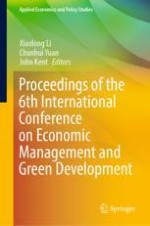2023 | OriginalPaper | Buchkapitel
The Impact of New Energy Vehicle Batteries on the Natural Environment and Recycling Method
verfasst von : Ziyang Huang
Erschienen in: Proceedings of the 6th International Conference on Economic Management and Green Development
Verlag: Springer Nature Singapore
Aktivieren Sie unsere intelligente Suche, um passende Fachinhalte oder Patente zu finden.
Wählen Sie Textabschnitte aus um mit Künstlicher Intelligenz passenden Patente zu finden. powered by
Markieren Sie Textabschnitte, um KI-gestützt weitere passende Inhalte zu finden. powered by
